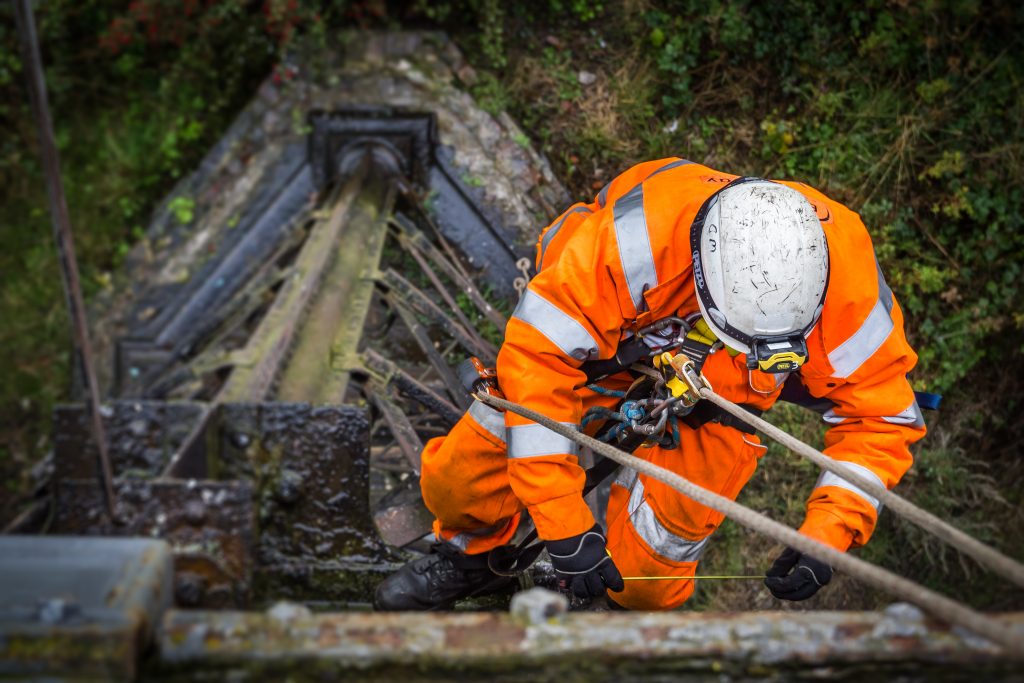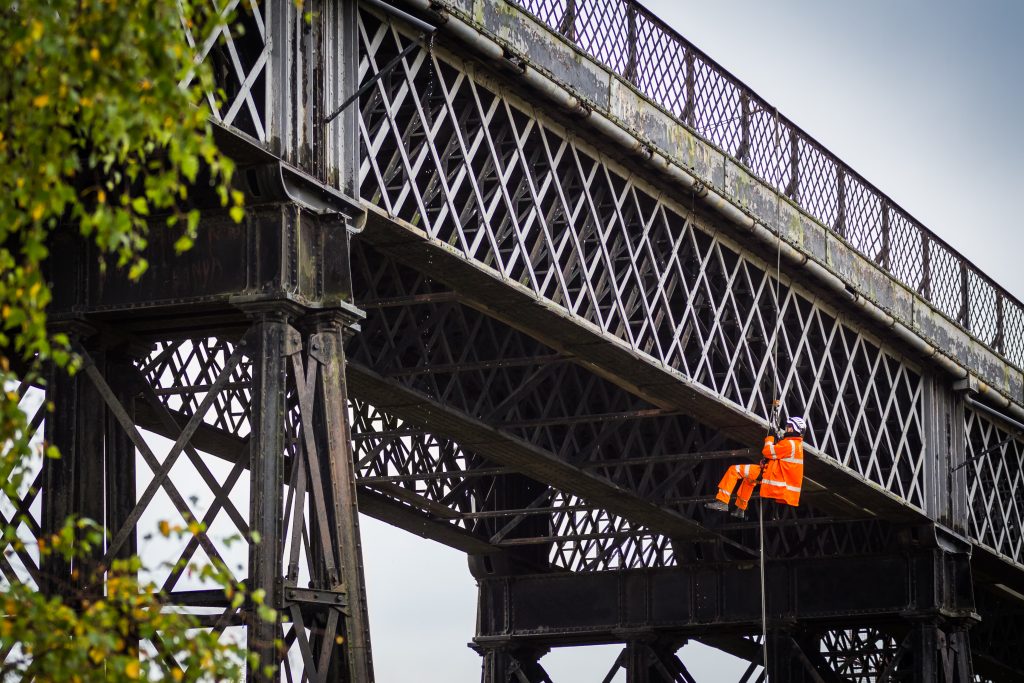When King Coal ruled Nottinghamshire and Derbyshire, his monopoly transport servant for much of the nineteenth century was the Midland Railway. But only one party profits from a monopoly and the Midland’s ability to dictate prices on a ‘take it or leave it’ basis seriously dented Derby’s position as an industrial powerhouse. So when local businessmen set their sights on 4,000 acres of coal-producing land on the Duke of St Albans’ Bestwood estate – which hadn’t been worked for want of a rail link – they saw an opportunity to open up the market.
The Great Northern Railway (Derbyshire and Staffordshire) Act of 1872 paved the way for a 40-mile network of main line and branches, ushering in a new era of competition. But it came at a price, beyond the estimated £1.1 million construction cost. To entice the GNR onto the scene, it was effectively given free rein to adopt the cheapest possible alignment, demolishing its way through the middle of Derby. Several streets disappeared. That’s not to say the route was easy though: 23⁄4 million cubic yards of material had to be excavated as progress was made across the East Midlands, sufficient to form a pyramid with a base of five acres and reaching skywards by 1,000 feet.
Two big-ticket features focussed the minds of Richard Johnson, the Great Northern’s chief engineer, and Samuel Abbott, under whose immediate supervision the works were pushed forward by contractor Benton & Woodiwiss. The first, a tunnel of 1,132 yards, helped the line to negotiate a ridge to the north-east of Nottingham, whilst the second carried it over the River Erewash and its flood plain. This was Bennerley (née Ilkeston) Viaduct, a striking wrought iron structure, 484 yards long and 56 feet high. It’s one of only two surviving in the UK – the other being at Meldon in Devon – and was reputedly modelled on the impressive Busseau-sur-Creuse Viaduct in central France, engineered by Wilhelm Nördling.
Keep it light
The main part of Bennerley Viaduct features 16 spans, mostly extending for 77 feet and each formed of three lattice girders, supported by trestle piers. To overcome the Midland Railway’s Erewash Valley line, additional spans of 26, 35 and 52 feet were needed at its western end, supported by brick piers and abutments set at a skew of 15°.
Influencing the design and choice of material were abandoned coal and ironstone workings underlying the structure, the records for which were either lost or unavailable. A traditional masonry viaduct – or even masonry piers – was ruled out as it was assumed the honeycombed formations would be unable to withstand such a weight. As well as being light, the use of wrought iron also ensured a degree of flexibility in the event of foundation settlement.
“Personally, I think the proximity of iron producers was also a factor,” asserts Dave Gent, principal engineer at Atkins and wrought iron specialist. “Transporting materials to site was therefore not as expensive as it might have been. And what better way to showcase the capability of local industries?”
With its 39 puddling furnaces, Derby-based Eastwood, Swingler & Co won the contract to prefabricate the ironwork at its base on Osmaston Road. Construction got underway on the concrete and brick foundations in May 1876; two months later, attention turned to the first pier. Like the others, this comprised 12 tubular columns, riveted together from four quadrants and then cross-braced using interlaced pin-jointed ties to resist buckling and bending strains. Rather than using holding- down bolts, their bases were only held in position by building the brickwork up around them.
Whilst support for the rails would conventionally have been provided by waybeams, transverse iron troughs were instead installed at 2’4” centres, allowing ballast to the tipped across the deck and the track laid upon it. This low-fixity approach meant that any settlement of the structure – and consequential track misalignment – could easily be rectified through repacking. As the troughs also acted as cross girders, the load on the foundations was further reduced, totalling just 12 cwt per square foot.
Much like a production line, the process of erection gathered its own momentum, reaching a conclusion in just 18 months. But it was not without incident. A newspaper reporter recounted the scene after walking into the aftermath of a mishap involving a painter. “The poor fellow was adjusting a loose plank when he lost his balance and fell from a height of 40 feet head first upon the permanent way of the Midland Railway beneath.
He was said to have been alive when taken up, but as we listened to the description of the eye-witnesses and glanced, with a shudder, from the dizzy height to the pool of blood, which told its own dread tale too well, we felt that the chances of recovery from such a shock must be indeed small.”
Time travel
The viaduct started to repay the Great Northern’s considerable investment on 28 January 1878 when a limited minerals service started running over the Derbyshire Extension. Its operational life proved largely uneventful, except for the night of 31 January 1916 when a fleet of nine L20 Zeppelin airships crossed the North Sea with their sights set on Manchester and Liverpool. Several got lost in fog banks; others turned back due to mechanical problems. However it seems likely that the attention of Kapitänleutnant Franz Stabbert was caught by the glow of Bennerley Ironworks, immediately north of the viaduct. Several bombs were dropped, one narrowly missing the structure but obliterating the adjacent signal box.
Awash with duplicated lines, this corner of the East Midlands suffered deep cuts as the double- whammy of withering heavy industry and cheap road transport forced the notorious reshaping of the network in the 1960s. The Derbyshire Extension held out as a through route for freight until 6th May 1968, passenger services having ended four years earlier.
The viaduct enjoyed its retirement for a few years, earning a protective listing in 1974. A year later, however, with children risking life and limb on it, British Rail sought permission from two district councils to demolish the structure on safety and cost grounds. This was turned down, but its existence has been questioned periodically ever since, usually after adventurers have fallen off and injured themselves. Environment Secretary Michael Heseltine sent the matter to a public inquiry in 1980, thus creating some breathing space for the societies and campaign groups who wanted to save it. The outcome though was fudge and prevarication.
A charitable trust endeavoured to secure a useful future for the viaduct, but to no immediate avail and the British Rail Property Board eventually handed custodianship to Railway Paths Limited in 1998 as part of a portfolio which included 210 miles of disused railway routes and 695 structures. The intention was to ease the expansion of the National Cycle Network, under the auspices of sister charity Sustrans. It’s taken 18 years but, to that end, a way forward is now emerging for Bennerley Viaduct.
Power to transform
“Its time has come,” insists Kieran Lee, Sustrans’ community engagement officer. “Within the next few years, people will be crossing it again, but they’ll be on bikes.” Having lived nearby for almost 30 years, Kieran’s retirement has been largely consumed by the structure, promoting its future, helping others to learn more about it and leading monthly working parties of passionate people – the Friends of Bennerley Viaduct – who are keen to see the project come to fruition.
They see the viaduct as a community asset, with the potential to establish a direct, traffic- free route across the Erewash and serve as the centrepiece of an extended Great Northern Greenway, occupying the trackbed of the old Derbyshire Extension. It will connect visitors with the industrial legacy hereabouts and a fabulous wildlife corridor. Barn owls and kestrels both roost high in the viaduct’s ironwork.
“It has the potential to rejuvenate this part of the valley,” Kieran contends, “because people will come from a long way to see it. It will also give us pride that something on our doorstep is valued and celebrated. It’s not just ‘a lump of nineteenth-century scrap iron’, as a local councillor once described it. It’s a magnificent piece of railway architecture.”
Bringing all this about will not be cheap – around £2 million probably – but that’s small beer compared with the eye-watering £185 million earmarked for London’s Garden Bridge – crossing the Thames – £60 million of which is to come from the taxpayer. New earthworks will be needed as Bennerley Viaduct currently stands marooned, its approach embankments having long since been cleared away; there are also canals to overcome at both ends, as well as a bypass. Sustrans is expected to submit a bid for Heritage Lottery Fund money in February; the outcome should be known next summer.
Cover all angles
In part, the size of that bid will be influenced by the findings of a detailed condition survey – carried out during September and October – and the associated optioneering. This was very much a local effort, all those involved being based within 15 miles of the structure: Dave Gent leading on behalf of Atkins, with Bridgeway Consulting gathering the data. To help the engineering team, the Friends had already spent an arduous year ridding the pier bases of thick vegetation, as well as shifting ballast to expose the deck trough ends.
The work involved a laser scan of the entire structure, from which a set of accurate ‘general arrangement’ drawings has been produced. To reduce cost, time and risk, a tactile survey was undertaken of just one span by examiners using rope access, allowing the likelihood of defects in the other spans to be established through extrapolation.
Additionally, a full visual record was captured using an Unmanned Aerial Vehicle. “The quality of the high-definition photos from the drone is really promising,” says Dave Gent, “and is comparable with pictures taken by examiners hanging from a rope. You can measure bolt-head dimensions; rivets though are more difficult as they don’t have sharp edges. I’m hoping to use this as a case study to demonstrate the capabilities of UAV technology to other clients.”
In general terms, Bennerley Viaduct remains in remarkably good condition, despite the withdrawal of its substantive maintenance regime 48 years ago. Although the quality of wrought iron was inconsistent, the trapping of impurities through the manufacturing process had the effect of providing a higher corrosion resistance. This has worked to Bennerley’s benefit as its protective paintwork is now largely non-existent.
Whilst wrought iron could deliver a higher yield stress than mild steel, records weren’t usually kept of what grade of iron was used for which structure, so the loading capacity of two adjacent bridges – or even identical members on the same bridge – could vary considerably. There were no defined standards; section sizes were all determined by the fabricators and engineers.
As expected, the survey found that the trough ends have corroded and there’s some rust- jacking between plates. Rivets are missing – although there are almost half-a-million of them – and many of the pier bases have lost brickwork due to freeze/thaw action and sapling growth. Left to their own devices, these defects will inevitably deteriorate so some remedial work is needed. There’s nothing fundamental though.
Solid investment
As a piece of engineering heritage, Bennerley Viaduct has national importance. It is however legitimate to question how much value we can be justifiably attach to ‘heritage’ in this age of austerity. There are hospitals to fund, schools to maintain, and less public money to do either with.
The issue here is one of cost-benefit, looking at the broader picture. Ploughing money into a redundant structure is teetering on untenable, beyond the obligation to protect public safety. So why not restore its functionality? Bennerley can be repurposed to benefit health, transport, tourism, business. There’s more to life than CapEx; schemes like this impact positively on communities long after the compound has been demobilised. Evidence of that can be found up and down the country. Ultimately you get more out than you initially put in.
It’s hoped that Bennerley Viaduct’s next operational period will be underway by 2020. Get your lycra aired.
Written by Graeme Bickerdike
Inset photos: Four by Three






